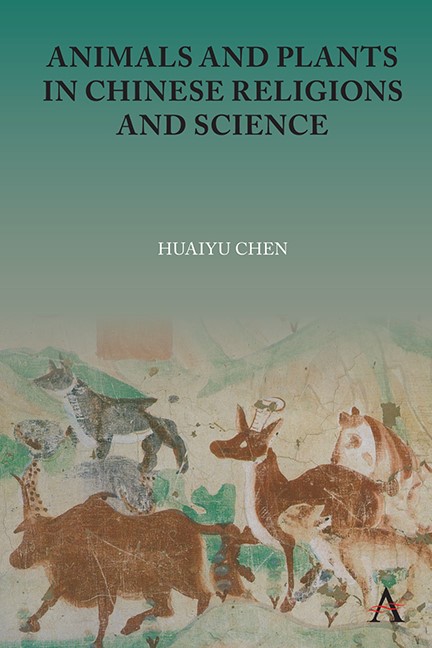Book contents
- Frontmatter
- Contents
- Acknowledgments
- List of Illustrations
- Introduction
- 1 Plant Science and Technology in Medieval China
- 2 Ordering Plants in the Buddhist World: A Medieval Botanical Taxonomy
- 3 Animal Divination and Climate: An Environmental Perspective on the Cult of the Pig
- 4 Zoomancy in Medieval China
- 5 The Changing Images of Zodiac Animals in Medieval Chinese Buddhist Literature
- 6 The Were-Tigers in Medieval China and Its Asian Context
- 7 The Animal Turn in Asian Studies and the Asian Turn in the Animal Studies
- Bibliography
- Index
2 - Ordering Plants in the Buddhist World: A Medieval Botanical Taxonomy
Published online by Cambridge University Press: 15 November 2023
- Frontmatter
- Contents
- Acknowledgments
- List of Illustrations
- Introduction
- 1 Plant Science and Technology in Medieval China
- 2 Ordering Plants in the Buddhist World: A Medieval Botanical Taxonomy
- 3 Animal Divination and Climate: An Environmental Perspective on the Cult of the Pig
- 4 Zoomancy in Medieval China
- 5 The Changing Images of Zodiac Animals in Medieval Chinese Buddhist Literature
- 6 The Were-Tigers in Medieval China and Its Asian Context
- 7 The Animal Turn in Asian Studies and the Asian Turn in the Animal Studies
- Bibliography
- Index
Summary
Introduction
As the previous chapter briefly noted, plants were significant to the economic, cultural, and religious life in medieval China. Grains, vegetables, fruits, and raw materials for making textiles and papers helped sustain a society. Undoubtedly, plants played indispensable roles in the daily life of medieval Chinese Buddhist community. They provided material foundation for the daily operation of the Buddhist community, not only serving as food and nutrition nourishment, but also being presented as offerings to the Buddhist saints. In addition, plants often appeared as landscape decorations around the Buddhist sites, temples, and architectures. In other words, the Buddhist monastic and lay members developed both practical and symbolic meanings for having plants in their life. The Buddhist knowledge and concept of plants are also primarily based on the practical and spiritual needs of the Buddhist community, which emphasize moral and spiritual cultivations of the Buddhists, especially the monastic members.
In the long history of Buddhism from South Asia to China, similar to animals, some plants were more visible and remarkable for their close connections with the Buddhist tradition, such as the lotus f lowers, for their affinity with the Buddha. While Asia is a vast land, different regions might technically cultivate and culturally value different plants. Even for traditional China, as a vast empire, many different regions cultivated their own indigenous plants. With the spread of Buddhism in China, the Buddhist community gradually grew and expanded, and more and more gardens and fields were donated by lay supporters to the monastic community. The Buddhist community also received grains, vegetables, and fruits directly from the lay community. While dealing with both agricultural activities and plant offerings, some Chinese Buddhist masters, especially those who were involved in monastic administrations, developed their own knowledge and experience with plants in both Chinese and Buddhist traditions. This chapter will focus on how a medieval Chinese master Daoxuan (596–667) addressed the issues on the classification of plants in the monastic context. For me, this classification of the plants can be viewed as a Buddhist effort of ordering plants in medieval Buddhist world. This effort not only ref lected a Buddhist master’s knowledge about the botanical world, but also indicated how he reconciled the difference between Buddhist botanical knowledge and Chinese experience.
- Type
- Chapter
- Information
- Animals and Plants in Chinese Religions and Science , pp. 35 - 56Publisher: Anthem PressPrint publication year: 2023



